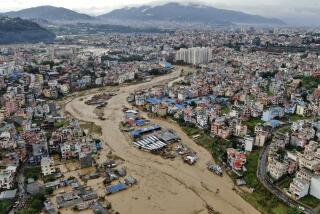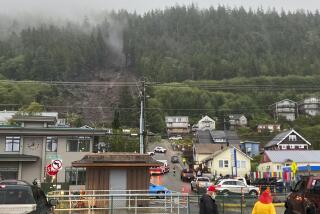Deforestation contributed to India’s deadly mudslide, experts say
A massive landslide that swallowed 44 houses in an Indian village might have been averted, or at least minimized, if basic environmental standards had been employed, environmentalists and geologists said as the death toll climbed to 134 on Tuesday.
More deaths were expected as rescue-and-recovery operations continued in the hillside village of Malin, located in the Pune district of Maharashtra state. The landslide occurred during a torrential downpour last week.
“Relentless rain naturally was the trigger. But the use of heavy machinery to flatten land for agriculture may have aggravated the crumbling of the hilltop,” Ashim Kumar Saha of the Geographical Survey of India told the Hindu newspaper.
Medha Patkar, a prominent environmental activist, had a similar explanation. “Deforestation leads to land erosion, which leads to landslide,” she said.
The government last year classified Malin as an “ecologically sensitive” village and recommended a no-development policy. But according to the Hindustan Times, official data show that about 28,000 trees were cut down in the area, and the unofficial figure could be closer to 300,000.
“The mountain located at the right side of Malin has been a victim of complete deforestation,” said environmentalist Vishwambhar Choudhari. “It was a severe landslide, but the presence of forests would have decreased the gravity of it.”
At least one local legislator, Dilip Walse Patil, discounted the environmentalists’ explanation.
“There was a development project going on in this village, but it was not where the landslide took place,” he told a regional television channel, IBN Lokmat. “It would be unfair to blame this project for this calamity. The rainfall exceeded the usual average, causing the landslide.”
Malin is in the foothills of Western Ghats, a mountain range that runs parallel to India’s west coast and is a UNESCO World Heritage site. The range has been developed for mining, wind farms and tourism, and environmentalists worry that it is under threat.
“It is a nexus between industrialists and government,” Choudhari said of development in the region. “Around 600 to 700 villages like Malin, located in the foothills of Western Ghats, are in [the] danger zone.”
“The tragic part, though,” said Patkar, “is [that] people have short memory.”
Parth M.N. is a special correspondent.
More to Read
Sign up for Essential California
The most important California stories and recommendations in your inbox every morning.
You may occasionally receive promotional content from the Los Angeles Times.










